With the growth of China’s economy, the demand for various means of transportation is getting higher and higher. As a more convenient and safer means of transportation, airplanes are very helpful for various activities such as business travel and tourism. By 2022, China will have 18 4F-rated airports. These airports are located in various cities in China, becoming transportation hubs and facilitating people’s travel.
This post will bring you 18 4F airports in China.
- The flight zone level is represented by numbers + letters. The first part is a number, which means the length of the runway, and “4” means more than 1800 meters. The second part is the letter, which means the wingspan and wheelbase of the aircraft that can take off and land, from A to F, the larger it goes back.
China’s 4F-class airports list:
- 1. Beijing Capital International Airport
- 2. Beijing Daxing International Airport
- 3. Hong Kong International Airport
- 4. Guangzhou Baiyun International Airport
- 5. Shanghai Pudong International Airport
- 6. Chengdu Shuangliu International Airport
- 7. Shenzhen Baoan International Airport
- 8. Kunming Changshui International Airport
- 9. Xi’an Xianyang International Airport
- 10. Nanjing Lukou International Airport
- 11. Hangzhou Xiaoshan International Airport
- 12. Wuhan Tianhe International Airport
- 13. Changsha Huanghua International Airport
- 14. Zhengzhou Xinzheng International Airport
- 15. Chongqing Jiangbei International Airport
- 16. Taiwan Taoyuan International Airport
- 17. Chengdu Tianfu International Airport
- 18. Qingdao Jiaodong International Airport
The Chinese 18 4F airports in 2022 are:
1. Beijing Capital International Airport
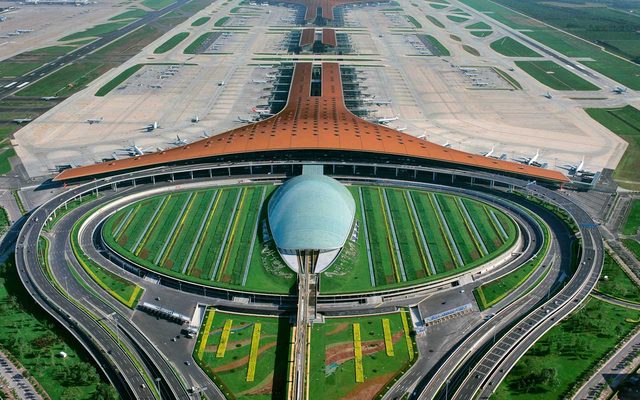
Beijing Capital International Airport (IATA: PEK, ICAO: ZBAA) is located in the northeastern suburbs of Beijing, China, 25 kilometers southwest from the center of Beijing, and 67 kilometers south from Beijing Daxing International Airport. It is a 4F international airport It is one of the three major gateway complex hubs in China, a member of the international air cargo hub group in the Bohai Rim region, and the world’s super-large airport.
Beijing Capital International Airport was completed in 1958. On January 1, 1980, supporting projects such as the T1 terminal building, apron, and parking lot in front of the building were completed and officially put into use. On November 1, 1999, the T2 terminal was officially put into use, and at the same time, the T1 terminal began to be out of service for renovation. On September 20, 2004, the T1 terminal was put into use again. In the spring of 2008, the airport expansion project (T3 terminal) was completed.
As of July 2017, Beijing Capital International Airport has three terminal buildings with a total area of 1.41 million square meters; there are two 4F-class runways and one 4E-class runway with lengths and widths of 3800×60 meters, 3200×50 meters, 3800 meters×60 meters; 314 aircraft seats; 252 domestic and foreign air routes have been opened.
2. Beijing Daxing International Airport
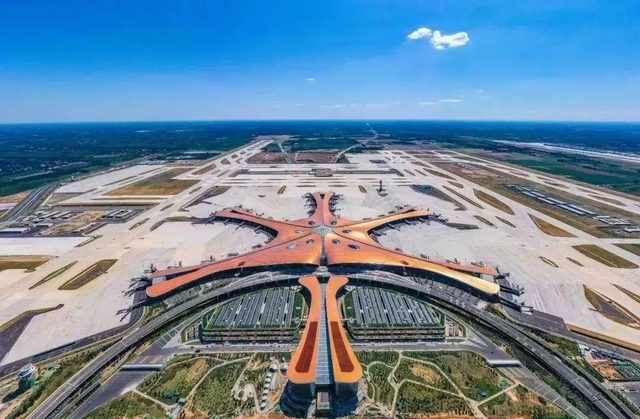
Beijing Daxing International Airport (IATA: PKX, ICAO: ZBAD) is located between Yulong Town and Lixian Town, Daxing District, Beijing, and Guangyang District, Langfang City, Hebei Province, 46 kilometers north of Tiananmen Square. It is 67 kilometers away from Beijing Capital International Airport in the north, 55 kilometers away from Xiong’an New Area in the south, and about 640 meters away from Beijing Nanjiao Airport in the west. It is a 4F-class international airport, a world-class aviation hub, and a new source of power for national development.
Beijing Daxing International Airport started construction on December 26, 2014, and was named “Beijing Daxing International Airport” on September 14, 2018; Beijing Daxing International Airport was officially opened to traffic on September 25, 2019, and Beijing Nanyuan Airport was officially closed; 2019 On October 27, 2008, the air port of Beijing Daxing International Airport was officially opened to the outside world. Foreigners are exempted from 144-hour transit visa and 24-hour transit exemption from border inspection procedures.
As of February 2021, Beijing Daxing International Airport has a terminal area of 780,000 square meters; there are 223 aircraft seats on the civil aviation station floor, of which 76 are near and 147 are far; there are 4 runways, east one, The North 1st and West 1st runways are 60m wide, 3400m, 3800m and 3800m long respectively. The West 2nd runway is 3800m long and 45m wide; it can meet the passenger throughput of 72 million passengers and the cargo and mail throughput of 2 million tons in 2025. , The demand for aircraft takeoffs and landings of 620,000 sorties.
3. Hong Kong International Airport
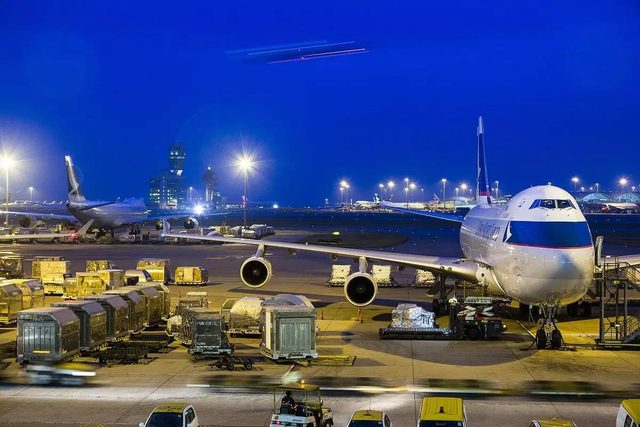
Hong Kong International Airport (IATA: HKG, ICAO: VHHH), located at Chek Lap Kok, Lantau Island, Hong Kong Special Administrative Region of the People’s Republic of China, 34 kilometers away from downtown Hong Kong, is a 4F international civil international airport, the busiest in the world One of the most important airports in the world, more than 100 airlines operate here, the passenger traffic ranks the 5th in the world, and the cargo volume ranks the 1st in the world for 18 consecutive years.
The Hong Kong International Airport was officially opened for navigation on July 6, 1998 and was named Hong Kong International Airport; the second phase of the expansion project (T2 terminal) was completed in February 2007.
According to the information on the airport’s official website in June 2019, the terminal area of Hong Kong International Airport is 850,000 square meters (including T1, T2, Satellite Hall and Haitian Passenger Terminal); there are two runways with a runway length of 3,800 meters; stand 182 There are more than 220 navigable cities.
In 2018, the passenger throughput of Hong Kong International Airport was 74.672 million, a year-on-year increase of 2.5%; the cargo and mail throughput was 5.121 million tons, a year-on-year increase of 1.7%; the number of takeoffs and landings was 427,700, a year-on-year increase of 1.5%; each ranked 8th in the world , The first place.
4. Guangzhou Baiyun International Airport
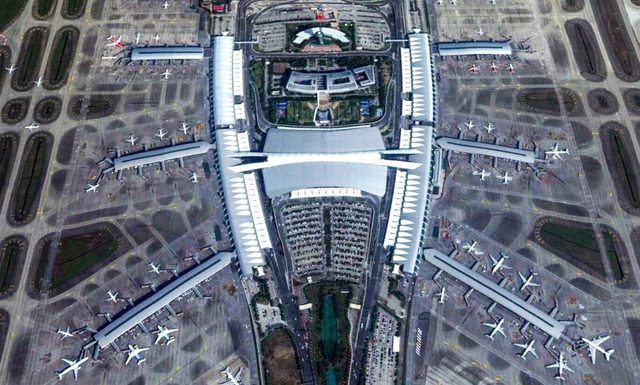
Guangzhou Baiyun International Airport (ICAO: ZGGG, IATA: CAN) is located at the junction of Renhe Town and Huadu District, Xinhua Street and Huadong Town, Renhe Town, Baiyun District, Guangzhou City, Guangdong Province, China, about 28 kilometers away from Guangzhou city center , A 4F-class civil international airport, is one of the three major gateway complex hub airports in China and the top 50 major airports in the world.
The predecessor of the airport was the old Baiyun Airport built in the 21st year of the Republic of China (1932). In 1963, it was renamed Guangzhou Baiyun International Airport. On August 5, 2004, the new Guangzhou Baiyun International Airport was officially opened. On February 5, 2015, the third runway of Guangzhou Baiyun International Airport was put into use. On April 26, 2018, Terminal T2 of Guangzhou Baiyun International Airport was officially opened.
According to the information on the airport’s official website in January 2020, Guangzhou Baiyun International Airport has two terminals, namely T1 (China domestic and international Hong Kong, Macao and Taiwan) and T2 (China domestic and international Hong Kong, Macao and Taiwan) with a total of 1.4037 million square meters; there are three in total. Runway, the length of the runway is 3800 meters, 3800 meters, 3,600 meters; 269 standard seats (including FBO), which can guarantee the annual passenger throughput of 80 million passengers, 2.5 million tons of cargo and mail throughput, and 620,000 aircraft movements. A total of more than 220 navigation points in China and abroad have been opened, including nearly 90 international and regional destinations. The route network covers five continents.
5. Shanghai Pudong International Airport
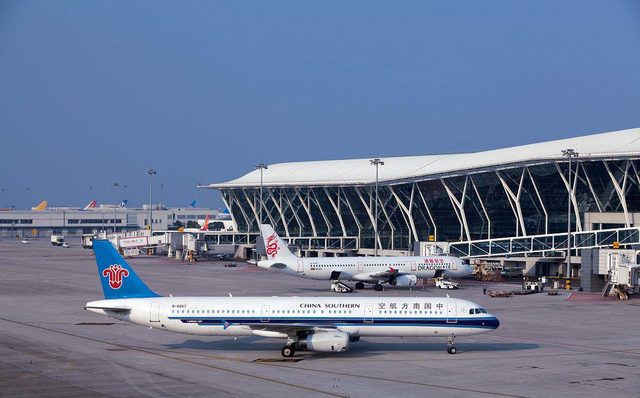
Shanghai Pudong International Airport (IATA code: PVG, ICAO code: ZSPD), located in Pudong New District, Shanghai, China, is about 30 kilometers away from the center of Shanghai. It is a 4F civil airport and one of the three major gateway complex hubs in China. 1. Members of the international air cargo hub group in the Yangtze River Delta region, members of the East China Airport Group, the largest hub airport and gateway airport in the East China region.
Shanghai Pudong International Airport was completed in 1999. The first phase of the project was completed and opened to navigation on September 16, 1999. The second runway was officially opened on March 17, 2005. The second terminal and third runway were officially opened to traffic on March 26, 2008. Opened, the fourth runway was officially opened on March 28, 2015.
According to information on the official website in November 2017, Pudong Airport has two terminal buildings and three cargo areas, with a total area of 824,000 square meters and 218 seats, including 135 passenger seats. There are four runways, 2 at 3800 meters, 1 at 3400 meters, and 1 at 4000 meters. As of the end of 2016, Pudong Airport has attracted 37 airlines to operate all-cargo aircraft business here, with all-cargo aircraft serving 31 countries, 112 routes, and nearly 1,000 all-cargo aircraft taking off and landing every week.
6. Chengdu Shuangliu International Airport
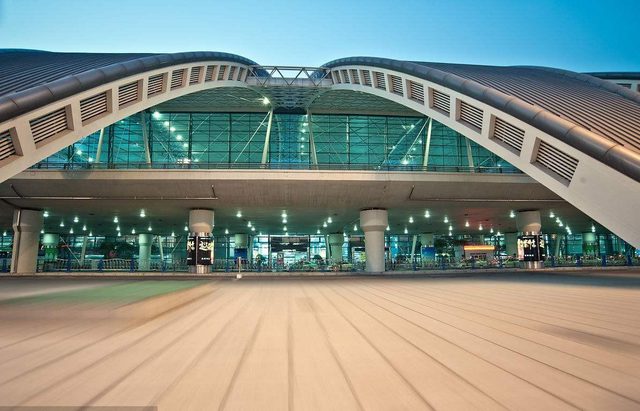
Chengdu Shuangliu International Airport (IATA: CTU, ICAO: ZUUU) is located in Chengdu, Sichuan Province, China, 16 kilometers away from downtown Chengdu, with geographic coordinates of 103°57’02” east longitude and 30°34’47” north latitude , The airport’s flight area level is 4F. It is one of China’s eight regional hub airports, an aviation hub and a passenger and cargo distribution center in inland China.
The predecessor of Chengdu Shuangliu International Airport was Chengdu Shuanggui Temple Airport, which was built in 1938. On December 12, 1956, Chengdu Shuanggui Temple Airport was renamed Chengdu Shuangliu Airport. On November 30, 1995, Chengdu Shuangliu Airport was approved to change its name to Chengdu Shuangliu International Airport. On August 9, 2012, Terminal 2 of Chengdu Shuangliu International Airport was officially put into operation.
According to the information on the airport’s official website in August 2017, the airport has 2 terminal buildings with a waiting area of 500,000 square meters, which can meet the annual passenger throughput of 50 million passengers. There are 3 air cargo stations and 2 parallel runways. , There are 3 aircraft parking areas with a total area of 9,412,700 square meters; a total of 228 parking bays (as of January 2020); 270 air routes are opened and 209 domestic and foreign cities are opened.
7. Shenzhen Baoan International Airport
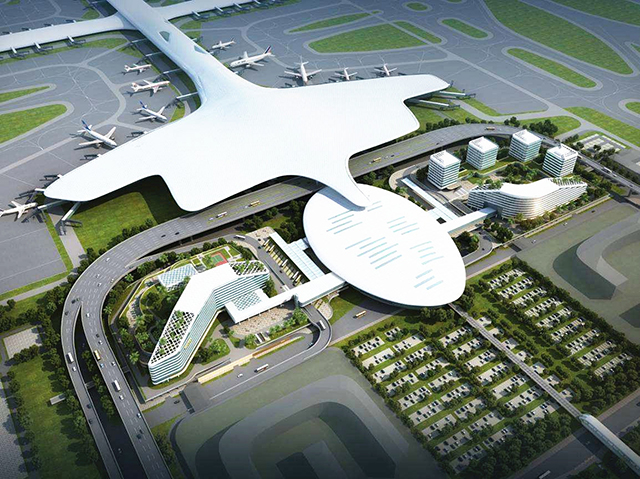
Shenzhen Bao’an International Airport (IATA: SZX, ICAO: ZGSZ) is located on the east bank of the Pearl River Estuary, Bao’an District, Shenzhen, China. The geographical coordinates are 113°49° east longitude and 22°36° north latitude. It is far away from Shenzhen The city is 32 kilometers away and is a 4F-class civil transportation airport. It is one of the top 100 airports in the world, an international hub airport, one of China’s twelve mainline airports, one of China’s four major air cargo centers and express delivery centers.
Shenzhen Airport was officially opened to air traffic in October 1991. On September 18, 2001, Shenzhen Huangtian International Airport was officially renamed Shenzhen Baoan International Airport. On June 15, 2006, the flight area expansion project was approved by the National Development and Reform Commission. On July 26, 2011, the second runway of Shenzhen Airport was officially opened.
According to the information on the airport’s official website in August 2017, the airport has a total flight area of 7.7 million square meters, a terminal area of 451,000 square meters, and an airport warehouse area of 1.66 million square meters; the new terminal covers an area of 195,000 square meters with a total of aprons. 199 (62 bridge seats); a total of 2 runways, of which the second runway is 3800 meters long and 60 meters wide; a total of 188 routes, including 154 domestic routes, 4 routes from Hong Kong, Macao and Taiwan, and 30 international routes Article; There are 139 navigable cities, including 108 domestic cities, 4 Hong Kong, Macao and Taiwan cities, and 27 international cities.
8. Kunming Changshui International Airport
Kunming Changshui International Airport (ICAO: ZPPP, IATA: KMG) is located in Changshui Village, Guandu District, Kunming City, Yunnan Province, 24.5 kilometers northeast of Kunming City. It is a 4F civil transportation airport and is owned by Yunnan Airport Group Co., Ltd. The company’s operation and management is one of the top 100 airports in the world, and the only large-scale gateway hub airport approved by the country during the “Eleventh Five-Year Plan” period. It is China’s eight regional hub airports and international aviation hubs. It is listed as China alongside Urumqi Diwopu International Airport. The two major national gateway hub airports.
According to the comprehensive information in January 2020, the airport has two runways, the east runway is 4,500 meters long, and the west runway is 4,000 meters long; the number of aircraft seats (including combined aircraft seats) is 161; it can guarantee a passenger throughput of 38 million passengers, cargo and mail The operational requirements for a throughput of 950,000 tons and 303,000 aircraft taking off and landing.
9. Xi’an Xianyang International Airport
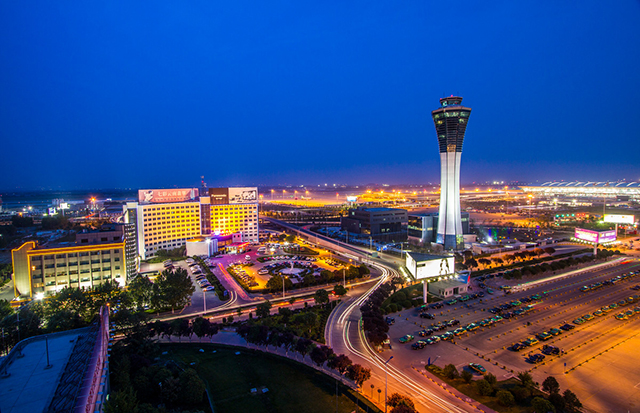
Xi’an Xianyang International Airport (IATA: XIY, ICAO: ZLXY) is located in Weicheng District, Xianyang City, northwest of Xi’an, Shaanxi Province, China. It is 25 kilometers away from downtown Xi’an. It is a 4F civil international airport. One of China’s eight regional hub airports, an international scheduled flight airport, and one of the world’s top 100 major airports. In June 2014, it became the first air port in Northwest China and the eighth in China to implement the 72-hour transit visa exemption policy.
Xi’an Xianyang International Airport was formally completed and opened for navigation on September 1, 1991; the second phase of the project was completed on September 16, 2003, and the T2 terminal of Xi’an Xianyang International Airport was opened; the second phase of the expansion project was completed on May 3, 2012, Xi’an The T3 terminal of Xianyang International Airport began to be used; during the “13th Five-Year Plan” period, Xi’an Xianyang International Airport will start the third phase of the expansion project.
According to information in September 2017, Xi’an Xianyang International Airport has three terminal buildings, namely T1 terminal, T2 (domestic) terminal and T3 (domestic and international) terminal, with a total of 350,000 square meters; There are two runways, the runway lengths are 3000 meters and 3800 meters respectively; 127 parking bays, 44 boarding bridges, and 25,000 square meters of cargo area; it can guarantee a peak hour passenger throughput of 10,000 passengers and an annual passenger throughput of 5000 The operation needs of 10,000 passengers and 400,000 tons of cargo and mail throughput; Xianyang Airport has established aviation business contacts with 62 domestic and foreign airlines, with 171 open cities and 313 domestic and foreign routes.
10. Nanjing Lukou International Airport
Nanjing Lukou International Airport (IATA: NKG, ICAO: ZSNJ), located in Lukou Street, Jiangning District, Nanjing City, is the gateway between Jiangsu Province and Nanjing City. It is a major national trunk airport and a first-class aviation port in East China. The main cargo airport in the region is an alternate airport with Shanghai Hongqiao Airport and Pudong Airport. It is a national large-scale hub airport, China’s air cargo center and express delivery center, and a national regional transportation hub.
Nanjing Lukou International Airport started construction in February 1995 and officially opened to air services on July 1, 1997; it was awarded the title of “International Sanitary Airport” by the World Health Organization in 2005; in 2009, the passenger throughput exceeded 10 million and entered China with 10 million passengers. The first-class large-scale airport ranks; the second phase of the project was completed and put into use in July 2014; the Nanjing-Los Angeles route opened in June 2015, making Nanjing the fifth city in China to open regular passenger routes to Europe, Australia, and the United States.
11. Hangzhou Xiaoshan International Airport
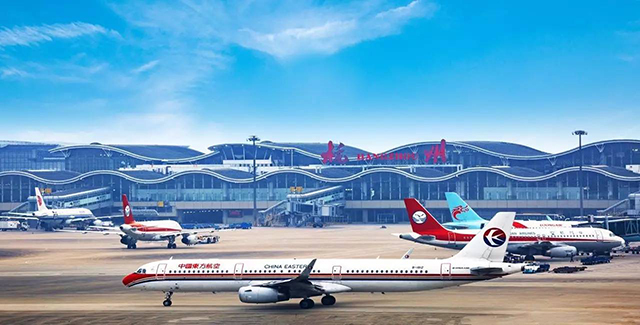
Hangzhou Xiaoshan International Airport (IATA: HGH, ICAO: ZSHC), located in Xiaoshan District, Hangzhou City, Zhejiang Province, is 27 kilometers away from the city center. It is a 4F civil transportation airport and one of China’s twelve major trunk airports. Airports for regular flights, first-class air ports open to the outside world, and alternate airports for international flights. In October 2014, it became an air port with a 72-hour transit visa exemption policy.
Hangzhou Xiaoshan International Airport was relocated and newly built from the original Hangzhou Jianqiao Airport civil aviation part. The project officially started in July 1997 and was completed and opened to navigation in December 2000. In November 2007, the second phase of the project officially started construction and was completed and put into operation in December 2012.
According to the information on the airport’s official website in August 2017, the airport occupies an area of 10 square kilometers and has three terminals, namely T1, T3 (domestic) terminal and T2 (international, Hong Kong, Macao and Taiwan) terminals, totaling 370,000 There are two runways with lengths of 3,600 meters and 3,400 meters respectively, which can meet the alternate landing requirements of A380 and below; passenger aircraft aprons of 1.1 million square meters, 49 boarding bridges, and cargo aircraft aprons of 52,000 square meters. It can meet the requirements of annual passenger throughput of 33 million passengers, cargo and mail throughput of 805,000 tons, and flight takeoffs and landings of 260,000. As of the end of 2015, the airport had a total of 127 seats and 235 air routes, including 196 domestic air routes.
12. Wuhan Tianhe International Airport
Wuhan Tianhe International Airport (IATA: WUH, ICAO: ZHHH), located in Huangpi District, Wuhan City, Hubei Province, China, 25 kilometers away from Wuhan city center, is the first 4F-class civil international airport in central China, and eight major regional airports in China One of the hub airports, an international scheduled flight airport, and a first-class air port open to the outside world. In January 2019, the airport began to implement a 144-hour transit visa-free policy.
The site was officially opened to navigation on April 15, 1995, named “Wuhan Tianhe Airport”; in 2000, it was confirmed as an international airport; in April 2008, the second phase of the expansion project was completed. The third phase of the expansion project was substantively started in June 2013, passed the completion acceptance in June 2017, and passed the industry acceptance in August 2017 and was put into use.
As of August 2020, Wuhan Tianhe International Airport has a terminal building with a total area of 495,000 square meters; it has two runways with lengths of 3,400 meters and 3,600 meters; a total of 117 seats and an air cargo terminal of 56.04 million square meters Meters; it can meet the needs of annual passenger throughput of 35 million passengers, cargo and mail throughput of 440,000 tons, and aircraft take-offs and landings of 404,000; a total of 170 domestic and foreign routes have been opened, including 53 international (regional) routes.
13. Changsha Huanghua International Airport
Changsha Huanghua International Airport (IATA: CSX, ICAO: ZGHA, CAAC: HHA) is located at Airport City No. 1 Road, Huanghua Town, Changsha County, Changsha City, Hunan Province, China, 23.5 kilometers west of Changsha city center, 4F First-class international airport, one of China’s twelve major trunk airports, international scheduled flight airports, first-class aviation ports open to the outside world, one of China’s top ten regional international aviation hubs, China (Hunan) Pilot Free Trade Zone Gateway Airport, Hunan Airlines Main operating base.
On June 25, 1986, Changsha Huanghua Airport started construction; on August 29, 1989, Changsha Huanghua Airport was officially opened and Changsha Datuopu Airport was converted into a military airport; in 1993, Changsha Huanghua Airport was officially renamed Changsha Huanghua International Airport; On July 19, 2011, Terminal T2 of Changsha Huanghua International Airport was opened; on January 1, 2016, Changsha Huanghua International Airport became an air port with a 72-hour transit visa-free policy for foreigners; March 30, 2017, Changsha The second runway of Huanghua International Airport was opened; on May 16, 2018, the T1 terminal of Changsha Huanghua International Airport was reopened.
As of February 2021, Changsha Huanghua International Airport has 2 terminals, of which the T1 terminal has an area of 53,000 square meters and the T2 terminal has an area of 213,000 square meters; there are 81 seats on the civil station, 32 of which are Near aircraft positions; there are 2 runways, the first runway is 3200 meters long and 45 meters wide, the second runway is 3800 meters long and 60 meters wide; it can meet the annual passenger throughput of 31 million passengers, cargo and mail throughput of 320,000 tons, and aircraft The use demand of 244,000 takeoffs and landings.
14. Zhengzhou Xinzheng International Airport
Zhengzhou Xinzheng International Airport (IATA: CGO, ICAO: ZHCC), referred to as “Xinzheng Airport”, is located at the junction of Xinzheng City and Zhongmu County, Zhengzhou City, Henan Province, China. It is a 4F-class international civil airport and the first in China The core component of the National Airport Zhengzhou Airport Economic Comprehensive Experimental Zone, the international air cargo hub airport, one of the eight regional hub airports in China, “7×24 hours” “full time” customs clearance international airport, large domestic aviation hub airport, international scheduled Flight airports, first-class national air ports that are open to the outside world.
On August 28, 1997, Zhengzhou Xinzheng International Airport was completed and opened to navigation. In May 2013, the requisition for the second phase of the project began. In January 2014, the second phase of the reconstruction and expansion project started construction. On December 22, 2015, the second phase expansion project of Zhengzhou Xinzheng International Airport was officially put into operation. On January 7, 2016, the second runway of Zhengzhou Xinzheng International Airport was opened. On March 30, 2016, the T1 terminal was out of service and all flights were moved to the T2 terminal for operation.
As of December 2015, Zhengzhou Xinzheng International Airport has two terminals (T1 terminal is out of service), with a total area of 620,000 square meters; T1 and T2 terminals have 158 parking bays, of which 149 are for passenger aircraft. ; There are two runways, 3400 meters and 3,600 meters respectively. As of December 2018, Zhengzhou Xinzheng International Airport has 55 passenger airlines, 208 passenger routes, 116 passenger cities; 21 cargo airlines, 34 cargo routes, and 40 cargo cities.
15. Chongqing Jiangbei International Airport
Chongqing Jiangbei International Airport (IATA: CKG, ICAO: ZUCK), located in Lianglu Street, Yubei District, Chongqing, China, 19 kilometers from the city center, is a 4F civil international airport and one of the eight regional hub airports in China 1. It is an air port that implements a 144-hour transit visa exemption policy.
Chongqing Jiangbei International Airport was officially opened for navigation on January 22, 1990, named Chongqing Jiangbei Airport; in 1998, it was renamed Chongqing Jiangbei International Airport; the second phase expansion project was completed in October 2005; the third phase expansion project was completed in December 2010; The fourth phase of the expansion project was completed in August 2017.
As of August 2017, Chongqing Jiangbei International Airport has three terminal buildings, namely T1, T2 (domestic) and T3A (domestic and international), covering a total of 730,000 square meters; there are three runways with a runway length of 3200 meters, 3600 meters, 3800 meters; apron 1.66 million square meters, 209 seats, [6] [11] 230,000 square meters of cargo area; it can guarantee annual passenger throughput of 45 million passengers, cargo and mail throughput of 1.1 million tons, and aircraft 373,000 sorties were dropped. [1] [6] As of December 2018, a total of 329 domestic and foreign air routes and 203 cities have been opened.
16. Taiwan Taoyuan International Airport
Taiwan Taoyuan International Airport (IATA: TPE, ICAO: RCTP), abbreviated as Taoyuan Airport, is located in Dayuan District, Taoyuan City, Taiwan Province, People’s Republic of China. It is about 40 kilometers away from Taipei city center. It is a 4F civil international airport.
Taiwan Taoyuan International Airport was officially opened for navigation on February 26, 1979, and was named Zhongzheng International Airport; on September 6, 2006, it was renamed Taiwan Taoyuan International Airport; on July 29, 2000, the second phase of the expansion project was completed.
As of December 2018, Taiwan Taoyuan International Airport has two terminals, namely T1 and T2, covering a total of 537,600 square meters; there are two runways with a runway length of 3,660 meters and 3,800 meters, respectively; 80 parking spaces, cargo The area is 416,000 square meters; it can guarantee an annual passenger throughput of 22 million passengers and a cargo and mail throughput of 2.9 million tons. As of December 2017, a total of 167 cities in China and abroad have been opened.
17. Chengdu Tianfu International Airport
Chengdu Tianfu International Airport (IATA: TFU, ICAO: ZUTF) is located in Lujia Town, Jianyang City, Chengdu City, Sichuan Province, China. It is 50 kilometers north of Chengdu city center and 50 kilometers northwest of Chengdu Shuangliu International Airport. It is a 4F international airport, an international aviation hub, one of the highest-ranking airports in the Silk Road Economic Belt, and the main hub of Chengdu International Aviation Hub.
In September 2015, the Civil Aviation Administration of China approved the naming of the new Chengdu Airport as “Chengdu Tianfu International Airport”; on May 7, 2016, Chengdu Tianfu International Airport officially started construction. On December 6, 2020, the school flight of Chengdu Tianfu International Airport was successful. On January 22, 2021, the first batch of passenger planes will be welcomed.
Chengdu Tianfu International Airport has two terminal buildings with an area of 600,000 square meters; the civil aviation terminal has 246 seats; there are 3 runways, each with a length of 4000 meters, 3800 meters and 3,200 meters; it can meet the annual passenger throughput of 4000 10,000 passengers, 700,000 tons of cargo and mail throughput, and 320,000 aircraft take-offs and landings.
18. Qingdao Jiaodong International Airport
Qingdao Jiaodong International Airport (IATA: TAO, ICAO: ZSQD) is located in Qiandiankou Village, Jiaodong Street, Jiaozhou City, Qingdao City, Shandong Province, China, 11 kilometers southwest of Jiaozhou city center and 39 kilometers southeast of Qingdao city center It is 28 kilometers away from Qingdao Liuting International Airport. It is Shandong’s first 4F international airport, a regional hub airport, and a gateway airport facing Japan and South Korea.
On June 26, 2015, Qingdao Jiaodong International Airport laid the groundwork; on November 21, 2018, Qingdao’s new airport was named “Qingdao Jiaodong Airport”.
The terminal building of Qingdao Jiaodong International Airport covers an area of 478,000 square meters, with 97 boarding bridges; there are a total of 178 aircraft seats on the apron, 76 of which are near seats; two runways, both of which are 3,600 meters long and wide They are 45 meters and 60 meters respectively; they can meet the demand for passenger throughput of 35 million passengers, cargo and mail throughput of 500,000 tons, and aircraft takeoffs and landings of 298,000 in 2025.
On January 27, 2021, the Eastern China Regional Administration of Civil Aviation organized and coordinated all relevant units to successfully implement the airport test flight of the Qingdao Jiaodong International Airport construction project.